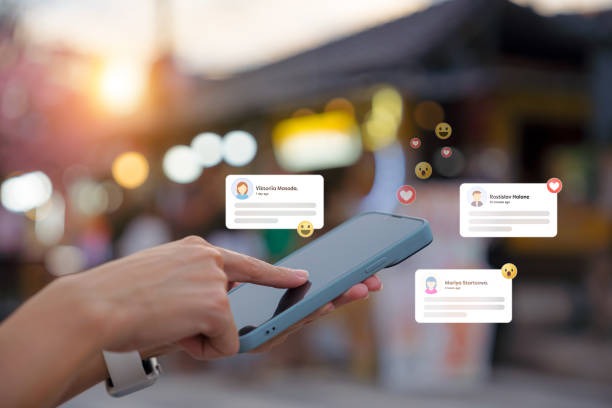Text messaging has transformed how businesses connect with their customers, delivering unmatched directness in their messages that other channels simply cannot match. The immediacy of sending SMS creates genuine engagement opportunities that cut through digital noise and reach people where they already spend their time. Modern consumers check their phones constantly, making text messaging a natural bridge between brands and their audiences. This shift represents more than just a communication trend—it’s becoming the backbone of customer relationship management.
Businesses partnering with a reliable SMS services provider gain access to communication tools that deliver messages instantly to customer devices. The power lies in the simplicity: no app downloads, no email sorting, no social media algorithms to navigate. Text messages arrive directly in the primary inbox that people check dozens of times daily. This direct path creates opportunities for meaningful interaction that other marketing channels struggle to achieve consistently.
Immediate Attention Capture: Text messages trigger an almost instinctive response in recipients, with most people reading SMS within three minutes of receipt. This immediate engagement window gives businesses a precious opportunity to deliver time-sensitive information or capture attention for promotional content. The psychological impact of receiving a text creates a sense of urgency that emails or social media posts rarely achieve.
Personal Space Advantage: Unlike other marketing channels that feel impersonal or invasive, text messaging feels more like a conversation between friends. People associate their phone numbers with trusted communications, making SMS feel less like advertising and more like important information. This psychological positioning allows businesses to build stronger connections with their audience through carefully crafted messaging strategies.
Open Rate Superiority: Text messages consistently achieve open rates above 90%, while email campaigns typically struggle to reach 25% open rates. This dramatic difference means businesses can communicate with nearly their entire subscriber base rather than hoping a fraction will notice their message. The reliability of SMS delivery ensures important updates, promotions, and alerts actually reach their intended recipients.
Response Time Excellence: The average response time for text messages is just 90 seconds, compared to 90 minutes for email responses. This speed creates opportunities for real-time customer service, instant feedback collection, and immediate purchase decisions. Businesses can leverage this responsiveness to create more dynamic customer experiences and faster problem resolution.
Timing Optimization Techniques: Successful SMS campaigns require careful consideration of when messages are sent to maximize engagement while respecting customer preferences. Morning messages might work well for appointment reminders, while evening texts could be perfect for promotional offers. Understanding your audience’s daily patterns helps determine the optimal sending windows for different message types.
Content Brevity Mastery: The 160-character limit forces businesses to distill their messages to essential information, creating more impactful communication. This constraint actually benefits both sender and receiver by eliminating unnecessary fluff and focusing on actionable content. Smart businesses use this limitation to their advantage, crafting concise messages that drive specific outcomes.
Trust Development Strategies: Text messaging allows businesses to build trust through consistent, valuable communication that respects customer time and preferences. By sending relevant updates, exclusive offers, and helpful information, companies can position themselves as trusted advisors rather than pushy salespeople. This approach creates long-term customer loyalty that extends beyond individual transactions.
Personalization Opportunities: Modern SMS platforms enable businesses to customize messages based on customer behavior, preferences, and purchase history. This personalization makes each text feel relevant and valuable to the recipient. Simple touches like using the customer’s name or referencing their recent purchases can significantly improve engagement rates and customer satisfaction.
Compliance Navigation: Businesses must understand regulations around SMS marketing, including opt-in requirements and message frequency limits. Proper compliance protects both the business and its customers while ensuring sustainable communication practices. The key is establishing clear expectations upfront and respecting customer preferences throughout the relationship.
Integration Complexity: Many businesses struggle with connecting SMS capabilities to their existing customer management systems and marketing tools. The solution often involves choosing platforms that offer API integration and work well with current business processes. This technical consideration can make or break the success of SMS marketing initiatives.
Successful text messaging campaigns share several key characteristics that drive engagement and results:
- Clear value proposition that explains why customers should opt in to receive messages
- Consistent messaging schedule that sets proper expectations for communication frequency
- Strong call-to-action elements that guide recipients toward desired next steps
- Mobile-optimized landing pages that continue the conversation seamlessly
- Easy opt-out processes that respect customer preferences and maintain trust
Two-Way Communication Benefits: Interactive SMS campaigns that encourage responses create deeper engagement than one-way broadcasting. Customers appreciate being able to ask questions, provide feedback, or request specific information through text. This dialogue approach transforms SMS from a marketing tool into a customer service channel that builds stronger relationships.
Automation Integration Value: Combining SMS with automated workflows allows businesses to send triggered messages based on customer actions or behaviors. Welcome series, abandoned cart reminders, and post-purchase follow-ups can all be delivered through text messaging with proper timing and personalization. This automation ensures consistent communication without requiring constant manual effort.
Text messaging represents a powerful opportunity for businesses to connect with customers in meaningful ways that drive engagement and results. The combination of high open rates, immediate delivery, and personal feel makes SMS an essential component of modern communication strategies. Smart businesses recognize that success requires more than just sending messages—it demands understanding customer preferences, respecting their time, and delivering genuine value through every interaction. Start building your SMS strategy today to unlock deeper customer connections and drive sustainable business growth.
